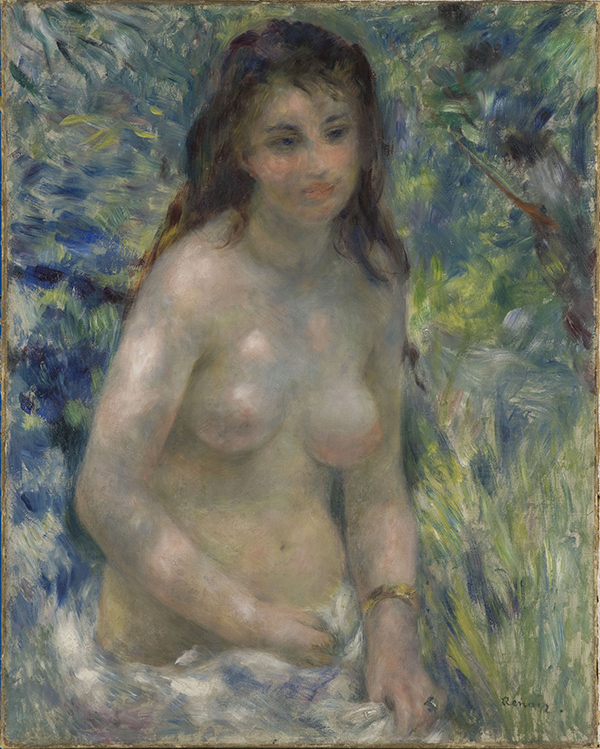
JUNE 8–SEPTEMBER 22, 2019
IMPRESSIONIST FIGURE PAINTING
Pierre-Auguste Renoir (French, 1841-1919), Study. Torso of a Woman in the Sunlight, 1875-76. Oil on canvas, 31 7/8 × 25 9/16 in. Musée d'Orsay, Paris, Bequest of Gustave Caillebotte, 1894
Renoir was a central figure in the Impressionist circle, a group that included Frédéric Bazille, Mary Cassatt, Paul Cézanne, Edgar Degas, Édouard Manet, Claude Monet, Berthe Morisot, Camille Pissarro, and Alfred Sisley, among others. The Impressionist movement advocated for the exhibition of works of art—often landscapes or scenes of modern life—in venues other than the official Salon.
Despite Renoir’s interest in painting “flesh pollen,” as poet Stéphane Mallarmé phrased it, of the more than seventy works he submitted to the Impressionist exhibitions between 1874 and 1882, he only included one nude, Study. Torso of a Woman in the Sunlight. However, during this period he produced several half-dressed and nude figure paintings in which his primary challenge was to capture, in his own words, “skin that caught the light well.” For Renoir, the nude—the sanctioned academic subject—could be adapted to meet the Impressionists’ call for experimentation with color and light. Critics such as Edmond Duranty embraced this anti-classical approach to painting: “Farewell to the uniform monotony of bone structure, to the anatomical model beneath the nude.”
Offering the first-ever comprehensive investigation of Renoir’s nudes, Renoir: The Body, The Senses was published by the Clark Art Institute and edited by the exhibition’s curators, Esther Bell, Robert and Martha Berman Lipp Chief Curator of the Clark Art Institute, and George T. M. Shackelford, deputy director of the Kimbell Art Museum. This beautifully illustrated catalogue includes essays by Colin B. Bailey, Morgan Library & Museum; Martha Lucy, Barnes Foundation; Nicole R. Myers, Dallas Museum of Art; and Sylvie Patry, Musée d’Orsay; with an interview between contemporary figurative painter Lisa Yuskavage and Alison de Lima Greene, Museum of Fine Arts, Houston.


